Can a new doc about her ‘wardrobe malfunction’ jump-start Janet Jackson’s comeback?
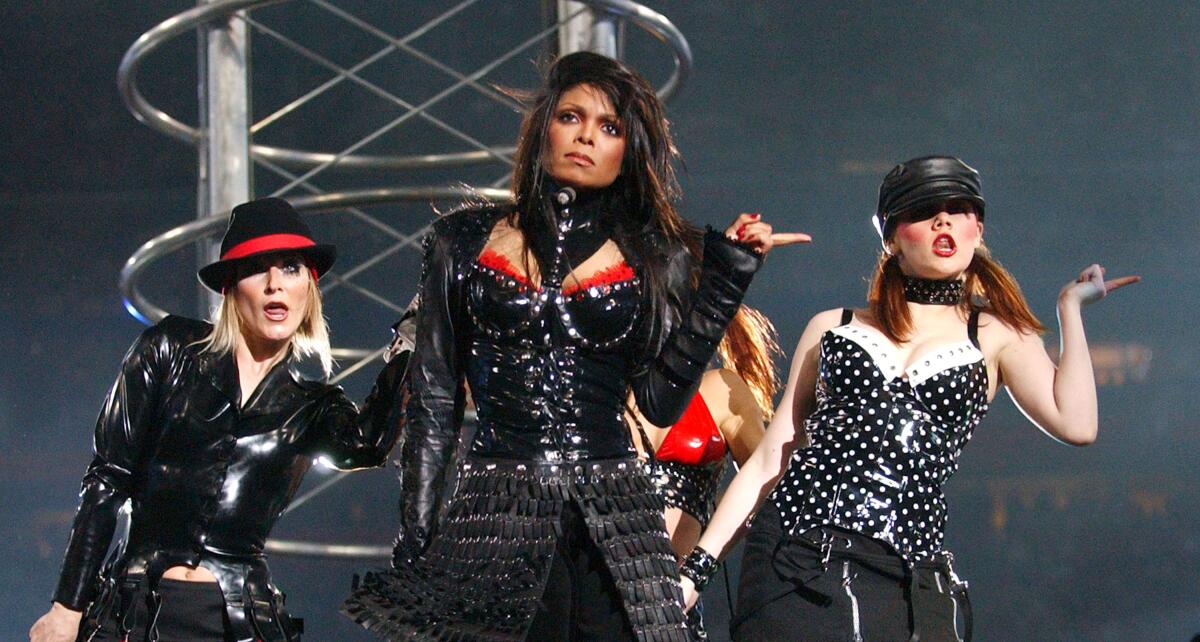
- Share via
This is the Los Angeles Times newsletter about all things TV and streaming movies. This week, we look back on the 2004 Super Bowl, prepare for the live-action “Cowboy Bebop” and shoot the breeze with Lin-Manuel Miranda. Scroll down!
Welcome to Screen Gab, the newsletter for everyone who spent this week luxuriating in Sad Girl Autumn.
Since last week’s edition, Taylor Swift has dropped “All Too Well: The Short Film,” a 14-minute swoon starring Dylan O’Brien and Sadie Sink; delivered the complete epic to a tearful America on “Saturday Night Live”; and unveiled a Blake Lively-directed video for “I Bet You Think About Me” featuring Miles Teller. (At least one Swift impersonator wholly approved.)
Not to be topped that easily, Adele promoted “30,” her first album in six years, with an exclusive Oprah interview and a one-night-only stand under (and with) the stars at Griffith Observatory on Sunday.
So who won out in the battle of the cardigan-weather divas? Let’s call it a split decision: The set of “SNL” may not have the epic, sweeping melancholy of Adele’s twilight rendition of “Someone Like You,” but this week’s episode did receive better notices than Adele’s sit-down with Oprah, which Times TV critic Lorraine Ali called “uneventful and distinctly nonrevealing.” In the end, though, it’s not a competition. There’s more than enough need for music that makes you want to curl up with a mug of cocoa and have a good cry.
The complete guide to home viewing
Get Screen Gab for everything about the TV shows and streaming movies everyone’s talking about.
You may occasionally receive promotional content from the Los Angeles Times.
ICYMI
Must-read stories you might have missed
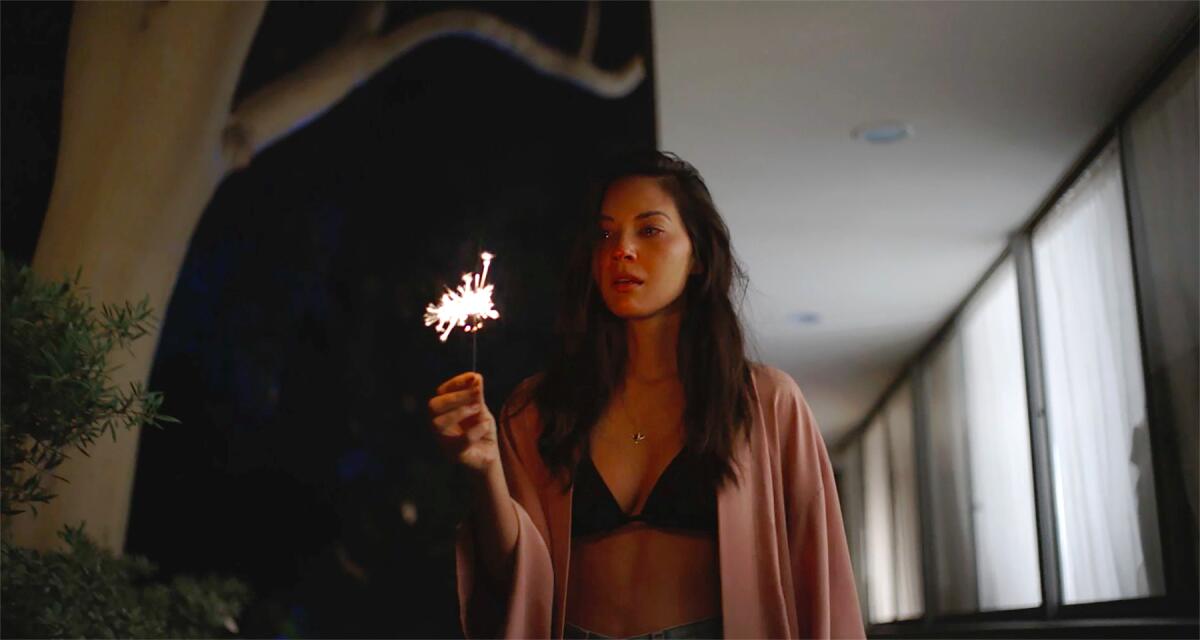
The 75 best TV shows on Netflix right now, according to our experts: We surveyed The Times’ TV team to come up with a list of the 75 best TV shows you can watch on Netflix. As in, tonight.
Olivia Munn is in a no-win situation. So she’s decided not to “play the game” at all: Munn opens up about pregnancy anxiety, the response to her relationship with John Mulaney and her new film, “Violet.”
“Tiger King 2” is the pinnacle of reality TV cynicism: The sequel to Netflix’s blockbuster reveals the franchise to have more in common with the worst of reality TV than other docuseries, even true crime.
“Sacrilegious”? Maybe. But this new basketball drama is the next “Friday Night Lights”: “Swagger,” from Apple TV+ and executive producer Kevin Durant, shines a penetrating spotlight on the highs and lows of youth basketball.
Turn on
Streaming recommendations from the film and TV experts at The Times
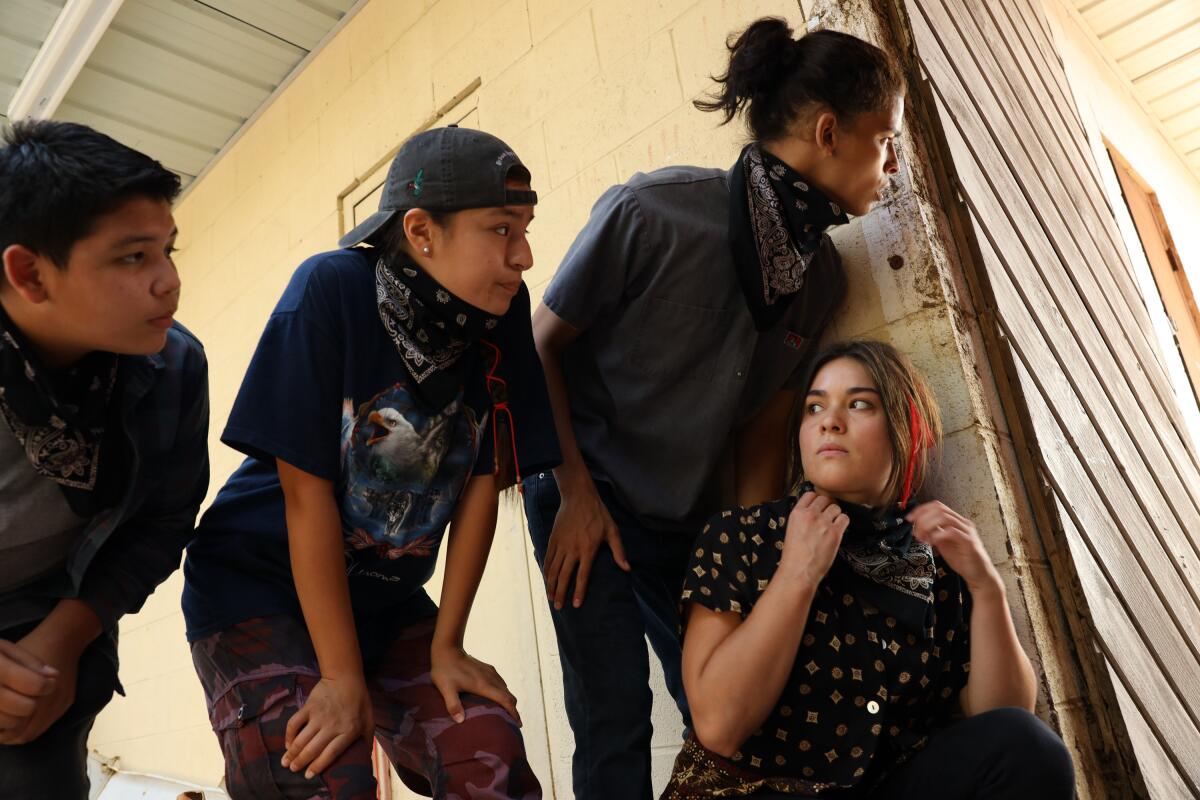
I’ve had “Reservation Dogs” (FX on Hulu) on my to-do list since it premiered in August, after Times TV critic Robert Lloyd called it a “radical” teen show with “life in every frame.” Having finally made time for it this week (sorry!), I can endorse his rave wholeheartedly. Created by Sterlin Harjo and Taika Waititi, written and directed entirely by Indigenous talent, the series is not simply an enthrallingly artful journey into Oklahoma’s Muscogee (Creek) Nation — though for the uninitiated, myself included, it brims with illuminating, often wryly funny depictions of the meager job opportunities, cramped housing and faltering healthcare system available to Indigenous people in America and the world over. “Reservation Dogs” is also, like fellow FX comedy standouts “Atlanta,” “Better Things” and “What We Do in the Shadows,” a seemingly infinite reservoir of unabashed invention, with episodes that feel like road movies, horror films, family dramas and farces. Led by a superb cast of young actors, including D’Pharaoh Woon-A-Tai, Devery Jacobs, Paulina Alexis and Lane Factor, it juggles Indigenous spirits, driver’s tests, racism, hunting, meth heads, country music and suicide without breaking a sweat, and emerges as perhaps the only series currently on TV to thoroughly capture the one great truth I learned teaching high school: No one is as real, or surreal, as teenagers. —Matt Brennan
If you have only 11 minutes to spare for your TV viewing — I’m looking at you, parents and workaholics! — consider escaping into the world of Netflix’s “El Tiempo Que Te Doy” (The Time I Give You). The Spanish series (don’t worry, subtitles are your friend) makes use of a unique format: It consists of 10 episodes of 11 minutes each and tells a story of love and heartbreak between Lina (Nadia de Santiago) and Nico (Álvaro Cervantes Sorribas). Each episode toggles between the past and present at different lengths — one minute in present time and 10 minutes in the past — two minutes in present time and nine minutes in the past, etc. — with the conceit being that Lina is trying to wean herself off thinking about Nico, whom she was with for nine years, by thinking about him a minute less each day. If only it were that easy IRL! Still, it’s an interesting, albeit brief, take on the romantic drama. —Yvonne Villarreal
Catch up
Everything you need to know about the film or TV series everyone’s talking about
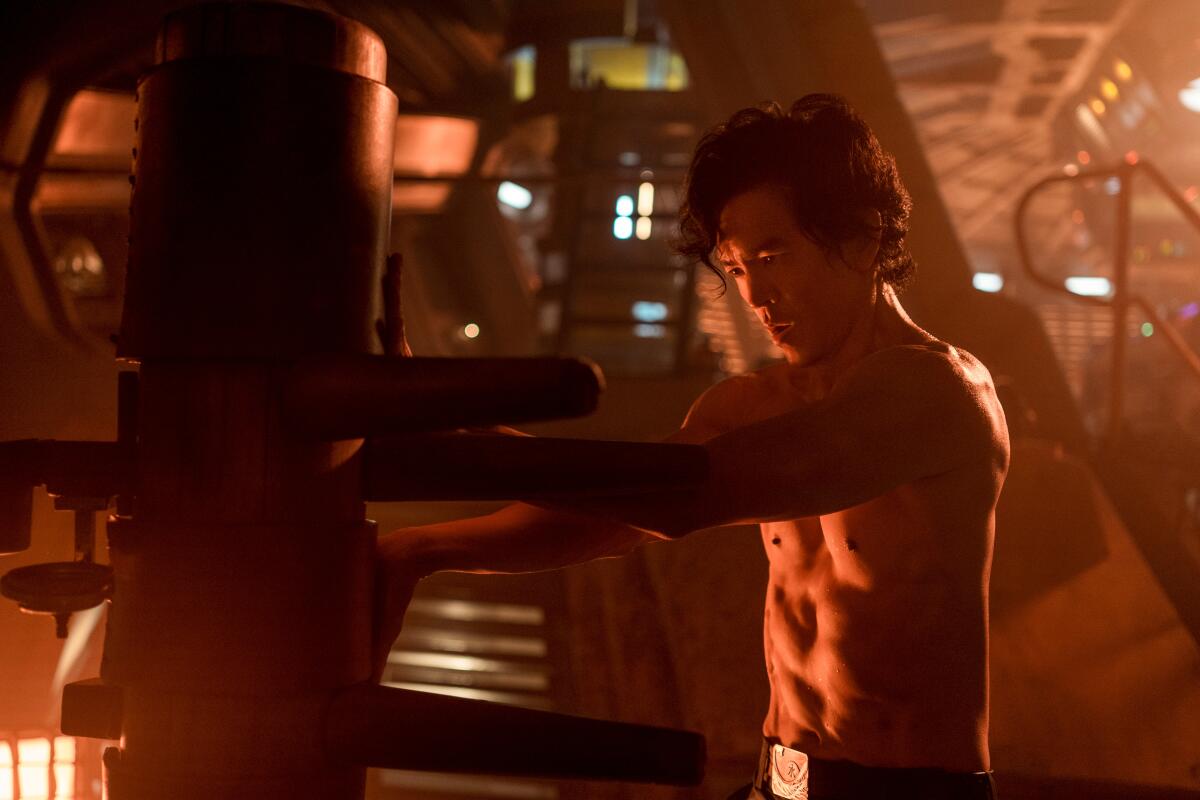
Hitting Netflix on Friday is “Cowboy Bebop,” the live-action adaptation of a beloved anime series often credited with helping expand the scope and reach of Japanese animation.
Set in the not-too-distant future, after humans colonized other planets and moons within the solar system, “Cowboy Bebop” follows a misfit crew of bounty hunters who operate out of the spaceship Bebop. They include the lethal but laid-back Spike Spiegel (John Cho), the hardworking Bebop captain, Jet Black (Mustafa Shakir), and — eventually — the scrappy and resourceful Faye Valentine (Daniella Pineda). The Bebop is also home to Ein, an adorable corgi that, at least in the anime, is more than meets the eye.
The original anime, which debuted in 1998, introduces a stylish, retro-futuristic world where there is enough crime that the space police have set up a legalized system allowing bounty hunters — cowboys, in the show’s parlance — to track down criminals and turn them in (alive) for monetary rewards.
Among “Cowboy Bebop’s” strengths are its characters. Spike, Jet and Faye each have their own distinct appeal, but are all relatably flawed and have complicated relationships with their pasts. The anime’s episodic structure enables audiences to become invested in the characters in the show’s present, while learning bits of their backstory as the story progresses. The anime also features a fourth Bebop crew member: a young hacker known as Radical Edward.
The anime has been lauded for its ambitious storytelling and engaging with more complex themes around morality, identity and the ways we can be shaped by our past. Plus, “Cowboy Bebop” is often cited as a series that showed there is an audience interested in animation with more mature stories in Japan and in the U.S.
As can be inferred from the title (bebop is a style of jazz), music is also an integral element of “Cowboy Bebop.” So it’s pretty significant that the show’s original composer, Yoko Kanno, has been tapped to score the live-action adaptation.
That said, Hollywood has an abysmal track record when it comes to adapting anime (see: “Ghost in the Shell,” “Death Note,” “Dragonball Evolution,” or even the anime-influenced “The Last Airbender”), so it’s understandable if fans of the original are wary. Is Netflix’s “Cowboy Bebop” the rare live-action adaptation that successfully channels the spirit of the original, while making necessary updates? There’s only one way to find out: 3-2-1, let’s jam. —Tracy Brown
Guest spot
A weekly chat with actors, writers, directors and more about what they’re working on — and what they’re watching
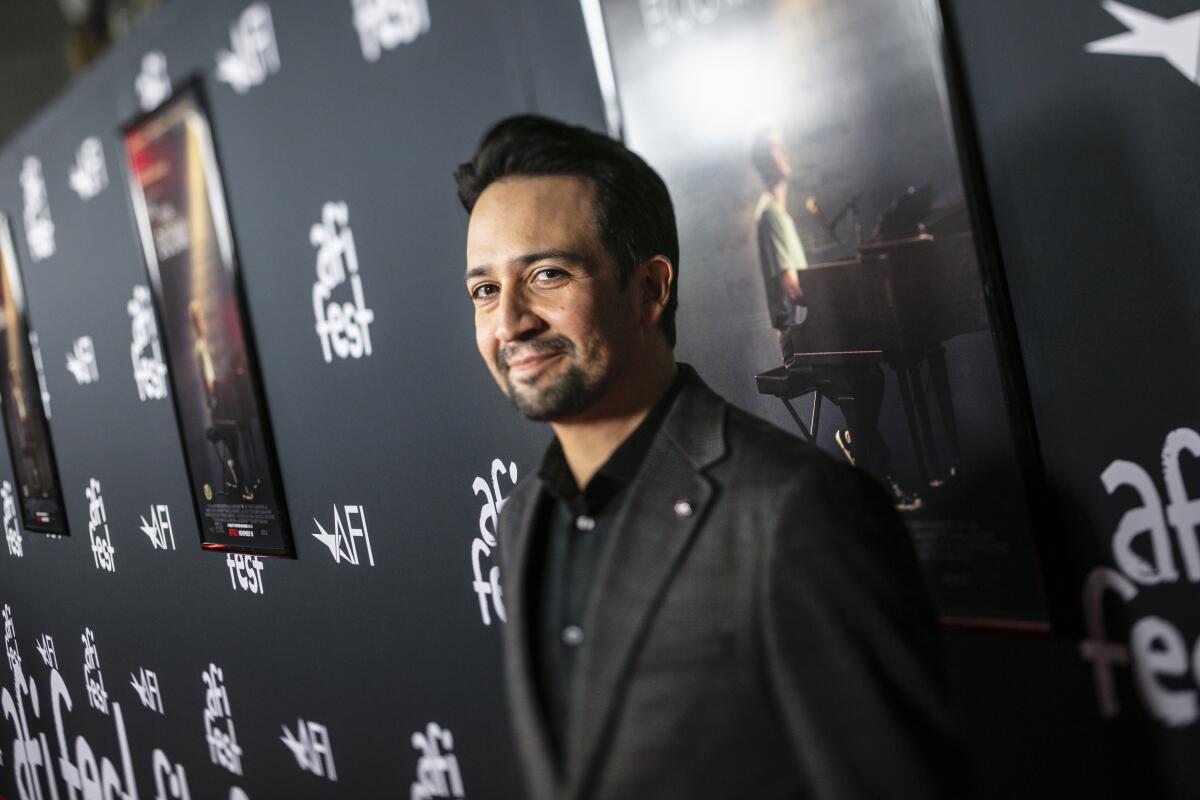
Lin-Manuel Miranda directs the screen adaptation of “Tick, Tick … Boom!” (Netflix), based on the musical from “Rent” creator Jonathan Larson. Staff writer Ashley Lee chatted with Miranda about his connection to the stage show and filming the movie during the pandemic, which prevented actors from singing on set.
When did you first see “Tick, Tick … Boom!” onstage?
I saw it in 2001 at its off-Broadway incarnation at the Jane Street Theatre. I was a senior in college, and it felt like a private message just for me, like a sneak preview of what my 20s would be if I decided to go into this creative field: “Hi, Lin, it’s Jonathan Larson. You see that pretty girl sitting next to you? She’s not going to be your girlfriend anymore, she’s going to get a real job and find happiness in another way. Those friends who are more talented than you? They’re going to grow up, get real jobs and have health insurance. You’re going to be the only one banging your head against the wall of this dream. You’re going to write music, and the world may not notice. So, you still want to do this?” It was clarifying, because my answer to all of that was “Yes.” I had to get a musical out of my head and onto a stage. It was “In the Heights,” which was directly inspired by “Rent.”
What was it like to act in a “Tick, Tick … Boom!” production in 2014?
My biggest takeaway from performing in the show was walking into the post-show reception and meeting all of the people in Jonathan’s life, for whom Jonathan is still alive when “Tick, Tick … Boom!” is being performed. They have a much less complicated relationship with this show. “Rent” was his masterpiece, but also inextricable from his death in a certain sense, and the Larson family had to make all these impossible decisions without him there.
How much were you able to film before the pandemic shutdowns?
We were only able to shoot about eight days. Even before the world shut down, we were getting scared and people were feeling unsafe on set. The city was emptying out. Jon M. Chu was editing “Heights” at the time, and he was driving to the airport to get out of town and ran across our set in the Village on the way. It was like those old western movies when a guy is walking into a town and all the townspeople are fleeing.
What was the biggest change when you all returned?
Singing live was not a thing that was allowed. It’s another level of preparation: The camera had to be at least six feet from the performer, the cameraman would have to wear a raincoat and a face shield. Two actors singing at each other? Forget it, that’s not an option.
What previous experience with another director helped you most when you were directing?
One of the things that Emily Blunt said to me when we started making “Mary Poppins Returns” was, “You don’t have to worry, Rob [Marshall] won’t move on unless he has what he needs, and he knows what he needs. So if he says, ‘Thank you, we have that,’ relax. He’s got it. You don’t have to ask for another take.” She worked with him on “Into the Woods” and had gotten to that level of trust with him. That’s where I wanted my actors to be with me: If I tell you I have it, then we have it. You can relax. That instinct is something I’m still honing, because it’s my first movie.
Break down
Times staffers chew on the pop culture of the moment — love it, hate it or somewhere in between

In “Malfunction: The Dressing Down of Janet Jackson” (FX, Hulu), “The New York Times Presents” follows a pair of blockbuster Britney Spears docs with a closer look at Jackson’s “wardrobe malfunction” during the 2004 Super Bowl halftime show. Senior editor Matt Brennan and staff writer Meredith Blake discuss whether it could turn the reclamation of Ms. Jackson into a cause célèbre.
Brennan: Britney has been free for approximately six minutes and already FX is out with a documentary on Janet Jackson. I thought it a useful distillation of the cultural forces at play in the controversy over Jackson’s bared breast, particularly a right-wing outrage machine — led, in this case, by the Parents Television Council — that has only become more well-oiled in the intervening years. What did you think?
Blake: The notorious “wardrobe malfunction” feels like an obvious subject to follow Spears’ conservatorship, given the shared themes of gender and celebrity in the early aughts and Justin Timberlake’s role as unwitting villain in both stories. For several years now, the culture has been reconsidering once-reviled women, including Jackson. The shameful treatment she received — especially compared to her white, male counterpart — has already inspired hashtags, Twitter threads and an episode of “You’re Wrong About.” A rigorous documentary seems like the logical next step.
Here’s where I will cautiously admit to some disappointment that “Malfunction” doesn’t really solve the central mystery of this whole debacle: how it came to pass that Timberlake tore off Jackson’s bustier cup, who was ultimately responsible for the mishap, and whether it was really a mishap at all. By the end of the documentary, we aren’t much closer to answers on any of these questions than we were in 2004, which is a bummer. Clearly establishing the chain of events that led to this incident would likely bolster the argument that Jackson was unfairly railroaded.
Brennan: I agree that there isn’t much new information in “Malfunction” — where the film succeeds is more in the realm of reframing the fallout from the Super Bowl, “You’re Wrong About”-style, as part of its sociopolitical context. There’s a surplus of material: the racism and sexism Jackson fought in the ’90s to forge her superstardom; the juggernaut that was MTV at the turn of the millennium; the NFL’s own outsize influence on pop culture; the powers and prerogatives of the FCC. I only wish the doc had gone further down a few of these rabbit holes.
Blake: Yes, the bigger issue is why we care so much about seeing one Black woman’s sorta-bare breast for nine-sixteenths of a second — or, rather, why we were made to care by a bunch of powerful white men, including then-CBS Chief Executive Les Moonves, especially in the year 2004, when the country surely had bigger disasters to worry about. It shows how a relatively small but committed group of conservative ideologues were able to leverage racism and sexism and turn a blink-and-you-miss-it nip slip — one that many viewers didn’t even notice until it was replayed, in slow-motion, hundreds of times on the news — into a matter seemingly worthy of Senate hearings. In that regard, I agree that “Malfunction” succeeds.
Thanks to commentary from New York Times writer Jenna Wortham and others, the doc is particularly insightful when it comes to misogynoir and the hypersexualization of Black women’s bodies in Western culture. And it clearly establishes that Jackson paid a much steeper price for the debacle than Timberlake, in part because Moonves — a man later accused of repeated sexual misconduct — seemed to think she hadn’t groveled enough despite multiple public apologies.
Still, I don’t know that “Malfunction” will trigger the same kind of sea change as “Framing Britney Spears,” which turned #FreeBritney into an issue with rare bipartisan support. For Jackson’s sake, I hope I am wrong. Wouldn’t it be nice to have her back at the Super Bowl? Maybe in a shared bill with Britney? Am I getting carried away here? Do you think this will spur a comeback? Or just make everyone dislike Timberlake more than they already do?
Brennan: I hope it restarts the conversation, and I expect it will. As “Malfunction” demonstrates, though, the systemic racism and sexism that led to Janet Jackson’s dressing down are more diffuse, and thus harder to disentangle, than a single legal covenant like a conservatorship — a situation that doesn’t lend itself as easily to slogans like #FreeBritney or, for that matter, sustained coverage in the press. In fact, the most poignant moment in the documentary may be its acknowledgment that we will never know where Jackson’s career, then at its zenith, would have gone, or been able to go, without the “wardrobe malfunction” hanging over her.
She certainly deserves another chance to perform at the Super Bowl, just as Timberlake got. It’s the least they could do. Whether she would want to, after all that’s happened, is another matter.
What’s next
The TV shows and streaming movies to keep an eye on in the coming week

Fri., Nov. 19
“Harriet the Spy” (Apple TV+): The children’s book character created by author Louise Fitzhugh and seared into the millennial consciousness by Michelle Trachtenberg becomes an animated heroine, voiced by Beanie Feldstein.
“King Richard” (HBO Max): Will Smith plays Richard Williams, of Venus and Serena fame.
“The Wheel of Time” (Amazon): “Gone Girl” Rosamund Pike stars in the streamer’s similarly fantasy-book-based answer to “Game of Thrones.”
Mon., Nov. 22
“The Beach” (A24 Screening Room): If you too would like to disappear to a remote beach for two months, A24’s slow-TV experiment from filmmaker Warwick Thornton is right up your alley. Tickets to stream the continuous loop for seven days are $6.
Tues., Nov. 23
“Black and Missing” (HBO): Soledad O’Brien and Geeta Gandbhir offer a four-part antidote to the media’s overwhelming focus on cases involving white women in this docuseries following sisters-in-law and Black and Missing Foundation founders Derrica and Natalie Wilson.
Wed., Nov. 24
“Hawkeye” (Disney+): The latest serial entry in the MCU, with vibes more “The Falcon and the Winter Soldier” than “WandaVision.” With Jeremy Renner and Emily Dickinson herself, Hailee Steinfeld.
“The Real World Homecoming: Los Angeles” (Paramount+): The reunion series, which triumphed earlier this year in its return to New York, hits Venice Beach nearly three decades later with the cast of “The Real World: Los Angeles.” Same digs included.
“True Story” (Netflix): A famous comedian (Kevin Hart) returns to his hometown for a tour stop and reconnect with his brother (Wesley Snipes). It doesn’t go smoothly! —Matt Brennan
Mail bag
Want to know more about one of the filmmakers we’ve interviewed? Need a new show to binge now that your fave is done for the season? If you have a question about TV or streaming movies for the pop culture obsessives at The Times, send it to us at [email protected] and you may find the answer in next week’s edition.
The biggest entertainment stories
Get our big stories about Hollywood, film, television, music, arts, culture and more right in your inbox as soon as they publish.
You may occasionally receive promotional content from the Los Angeles Times.



